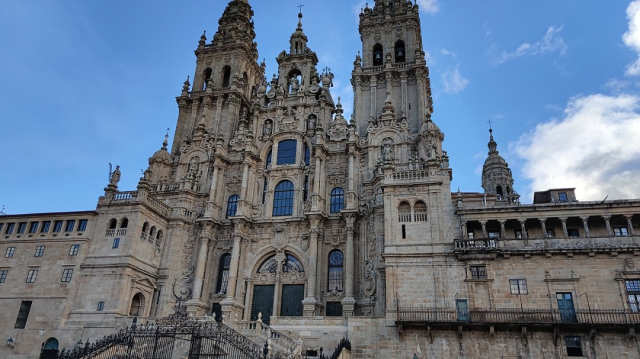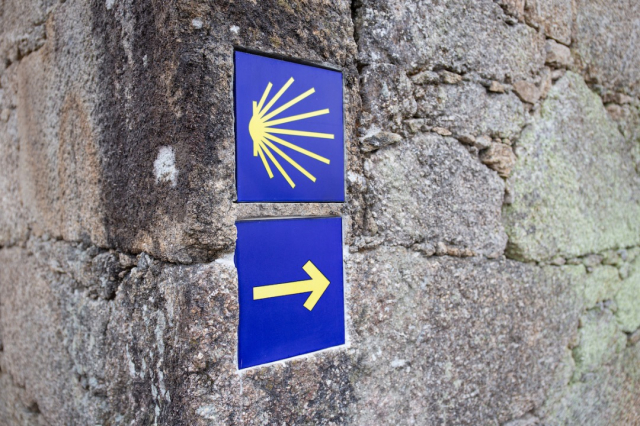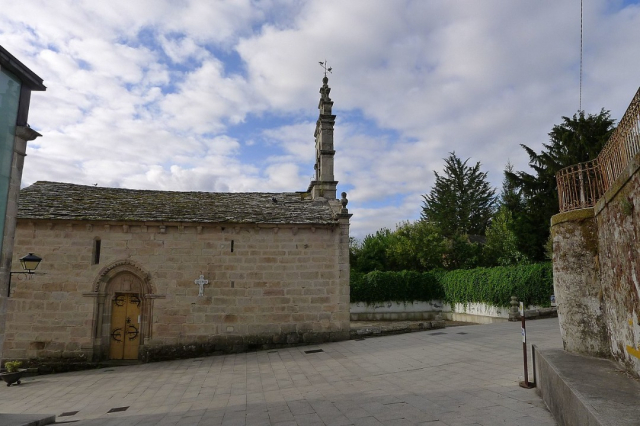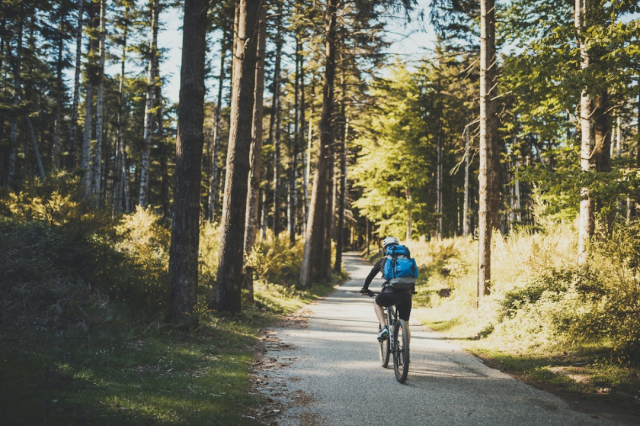Which is the easiest Way of Saint James?
We answer all the doubts of inexperienced pilgrims or without much free time wondering what is the easiest Camino de Santiago
All those who have ever done the Camino de Santiago know that it is one of the best experiences you can have in life. Being in touch with yourself and learning surrounded by beautiful natural landscapes and other people who share the same goal cannot be described in words.
But unfortunately, not everyone has the time or the physical preparation to undertake a walking trip lasting 20 or 30 days. However, one of the biggest advantages of the Camino de Santiago is that it has many routes to choose from, all equally valid and suitable for all types of pilgrims.
How to know if a route is easy
Although for some pilgrims it may be easy what for others is not, there are certain elements that we can take into account to consider whether a route is more or less easy than another and thus choose the one that best suits our needs.
Firstly, it is essential to know the gradient and altitude of the route. These are two of the most important elements, as they will directly condition our fatigue.
Thus, if a route has a steep slope, we will have to be going up and down slopes often, something that will require a great physical effort. In addition, if the route passes through very high places, fatigue will increase and temperatures will be lower, which can also make our journey more difficult. If, on the other hand, the route is mostly flat, it will be much less tiring, which will make it easier to walk for hours.
Secondly, the distance to be covered must be taken into account. Although it is true that the aforementioned will also influence the distance, more kilometres travelled will require more days of travel and we must be prepared for this. For this reason, it is best to look for a route that does not require a great physical effort and that is also short. Don't forget that the stages are usually around 20 kilometres, so 5 days may be enough to start with.
Finally, another element that can determine whether one route is easier than another is its signposting. Although getting disorientated for a few kilometres can always be solved, routes with good and abundant signposting will help you to always follow the right path. In this way, we will avoid any confusion that could lead us to cover our stage in more time than we had planned.
Elements to take into account when choosing your first route
Making the Camino de Santiago for the first time is a very special experience for all pilgrims. Therefore, it is important that everything goes well, and for this it is necessary to choose the route that best suits our needs and organize everything in advance.
One of the first elements that we must take into account is our physical condition, as this will largely condition the route that we choose. In this sense, it will be better to choose an easy route, with little slope and with all the necessary services. In addition, it is essential to prepare for the two months prior to our trip, in order to arrive trained.
On the other hand, it is important to take into account the distance we can travel as first-time pilgrims. If we have little time or we are not used to walking, it will be essential that in addition to being simple, the chosen route is short. If, on the other hand, we are used to hiking and we have the necessary time, we can think about walking a longer distance, but walking the easiest routes.
Another tip for doing the Camino de Santiago for the first time is to choose a good time of year. Avoiding the cold of winter or the high heat of summer will make the conditions for walking better, and therefore, it will cost us less work.
The shortest Camino de Santiago
Not always the shortest route is the easiest, but in this case it is. The vast majority of pilgrims decide to do the Camino de Santiago from Sarria, which corresponds to the French route. For this reason, this small town in Lugo is closely linked to the Jacobean route, since just over 100 km divided into 5 stages separate it from Santiago de Compostela.
The route of this route is not very complicated, as it does not have large climbs, so it is perfect for inexperienced pilgrims. In addition, due to the large annual influx of pilgrims, this route has a wide range of services available throughout the year, ie: hostels and restaurants for pilgrims.
Many pilgrims also choose this route because it covers the minimum distance that allows them to get the Compostela at the end of their journey, which is 100 km on foot.
The easiest Camino de Santiago: stages
As mentioned above, the route from Sarria has 5 stages that start from this town in Lugo to the capital of Galicia. All of them are around 20 km per day that are covered without major difficulties by paths of little relief.
- Stage 1: Sarria - Portomarín (22 km)
- Stage 2: Portomarín - Palas del Rei (24 km)
- Stage 3: Palas del Rei - Arzúa (29 km)
- Stage 4: Arzúa - Pedrouzo (19 km)
- Stage 5: Pedrouzo - Santiago de Compostela (21 km)
The greatest difficulty could be found in the third stage, but it is a challenge that is easy to take on for almost any type of pilgrim.
For those pilgrims who want to take the next step can also try other relatively affordable routes for beginners, which are the Portuguese Way or the English Way from Ferrol. Like the Sarria route, these two cover at least 100 km to Santiago and have amazing places to visit.
As for the Portuguese Way, the most affordable route is the one that begins in the town of Tui. Formed by five stages, it is a route that can carry out any pilgrim, since much of its route is paved, which means greater ease.
But this is not the only route of the Portuguese Way, since as its name suggests, this is born in the neighbouring country. Therefore, there are several starting points that we can choose to make this route if we already have some preparation and we have the necessary time. The most advisable would be the one that starts from Viana do Castelo, as well as having a simple route, we can do it in 10 days.
Options to make the Way of Saint James easier
Do the Camino de Santiago by bicycle
Although most pilgrims choose to do the Camino de Santiago on foot, the reality is that there are other options. One of the most common is to become a 'bicigrino', and undertake this journey on a bicycle.
While it is true that we will also need a previous preparation to make the Camino de Santiago by bicycle, the reality is that if we choose a simple route this way of pilgrimage can involve much less effort.
Firstly, with the bicycle we will cover more distance in less time, something that will be great if we want to visit more places but do not have many days. However, if we need to cover 100 km on foot to obtain the Compostela, we will need to cover twice as much on a bicycle.
In addition, another reason to take into account for choosing the bike is that it will help us to reduce the weight we carry, as we can place different bags in which to store our belongings.
A good option to undertake this adventure by bicycle for the first time, is to do the Camino de Santiago from Oporto, as well as being a route with little slope, covers more than 200 km of distance, which will give us the possibility of getting the compostela. Of course, it will be important that we have the necessary time, in case we want to make more stops than planned.
Doing the Way of St. James without carrying a backpack
One of the elements that can produce more fatigue when walking the Camino de Santiago for the first time, is to carry our backpack for several days. But this is something that can be avoided, as there is the possibility of walking the Camino "without a backpack".
With the Paq Mochila of Correos we will only have to focus on fulfilling our stages, as they will take care of transporting our backpack from one point to another, thus having all our belongings once we arrive at the hostel.
This will allow us to carry only the essentials, thus freeing us from a greater weight, and walking much lighter. We will quickly notice the reduction of tiredness and back pain, and we will even be able to include more things in our backpack than we would carry if we had to carry it.
Moreover, it is a fairly inexpensive service, which can be hired by individual stages and is available on practically all routes. However, some of them do not offer this service all year round, so it is important to find out more if you are considering this option.
Routes
Blog
 ¿Vas a hacer el camino de Santiago? Cuida tus pies antes y después
¿Vas a hacer el camino de Santiago? Cuida tus pies antes y después
 5 razones por las que contratar un seguro de viajes
5 razones por las que contratar un seguro de viajes
 Formas de hacer un logotipo
Formas de hacer un logotipo
 La importancia del registro de llamadas durante tu viaje por el Camino de Santiago
La importancia del registro de llamadas durante tu viaje por el Camino de Santiago
Information
Points of interest
Cities & Towns | Hostels | Lodgings | Restaurants | Saddlery | Doctors | Points of interest | Bikes workshop
Contact us | Privacy policy | Cookies policy | | Terms of use | Authorship | Web Map | Consentimiento
© Copyright LA VOZ DE GALICIA S.A. Polígono de Sabón, Arteixo, A CORUÑA (ESPAÑA) Inscrita en el Registro Mercantil de A Coruña en el Tomo 2438 del Archivo, Sección General, a los folios 91 y siguientes, hoja C-2141. CIF: A-15000649



